Review – Guppy Friend microfiber catching laundry bag
 In March, I wrote about microfiber laundry pollution from synthetic clothing and mentioned that soon there would be a special bag available called Guppy Friend to catch those microfibers before they are rinsed down the drain. Well, the bag is now available and the company sent me one to test out.
In March, I wrote about microfiber laundry pollution from synthetic clothing and mentioned that soon there would be a special bag available called Guppy Friend to catch those microfibers before they are rinsed down the drain. Well, the bag is now available and the company sent me one to test out.
Guppy Friend is a product developed by the campaign STOP! MICRO WASTE, a German non-profit founded by a group of surfers and nature lovers to find solutions to the microfiber pollution problem. Â Guppy Friend is just one of their projects, as they recognize that it is only one small part of the solution to a huge problem that will require systemic change on a massive scale, not just a few people conscientiously washing their polyester fleece in a special bag. Â But for those of you conscientious folk out there who do wear synthetic clothing and want to prevent the fibers from escaping into our waterways, here is one small solution.
Guppy Friend is a synthetic bag (yes, a plastic bag meant to catch plastic fibers) that you fill with synthetic clothing (polyester, acrylic, spandex, lycra, etc.) to wash in the washing machine. Â When it arrived in plastic packaging, I just sighed. Â After all these years, people are still packaging products meant to combat plastic pollution in more plastic. Â It’s just so ingrained in our society that everything must be protected with plastic — even things already made out of plastic!
CATS LOVE GUPPY FRIEND
I freed Guppy Friend from its bag and laid it out on the floor. Â Immediately, my cats went to work sniffing and scratching at it. Â But don’t forget — my cats LOVE to eat plastic! Â This is one item I will have to keep away from them.
Without reading the instructions, I packed the bag full of polyester fleece clothing. Â No, not MY polyester fleece. Â I don’t wear that stuff anymore (and honestly, I think the best solution is just to avoid it.) Â But I live with someone who does wear it, so there was plenty to experiment with.
NOTE: Â This is NOT the correct way to fill the bag! Â Only after stuffing the bag full and finding that the first load did not get clean did I actually read the instructions.
But before that, Soots and Arya went to town on it.
CORRECT WAY TO FILL GUPPY FRIEND: No more than HALF FULL
Removing half the clothing, I placed Guppy Friend in the washer and did a second wash.
I made sure to add other (non-synthetic) clothing to balance out the load.
USE LIQUID SOAP
As per the recommendations on the Guppy Friend site, I used liquid laundry soap rather than powdered in the wash.
What is the brown liquid, you ask? Â It is my homemade soap nuts laundry liquid, which we’ve been using with great success for several years. Â In addition to using soap nuts to clean clothes, we use white vinegar in the rinse cycle to make sure clothes rinse clean and to keep the washing machine from developing soap buildup. Â You can read more about our plastic-free laundry procedures here.
Okay, so laundry cycle completed, I removed the Guppy Friend bag from the machine, took out the clothes, and examined the bag to see if it had caught any fibers. Â Yep. it did.
There wasn’t a ton of microfiber shedding, but per the Guppy Friend website, that’s to be expected. Â According to co-founder Alexander Nolte, Guppy Friend can actually extend the life of your clothing.
It is important to point out that the bag not only captures the broken microfibers, but reduces the mechanical forces that cause the breaking significantly. As a consequence the textiles washed inside Guppyfriend lose a lot less fibers, thus have an extended lifespan.
Most of the fibers collected in a corner of the bag, which was also expected.
DO NOT RINSE!
IMPORTANT: Â Once your Guppy Friend has collected microfibers, do not rinse it out! Â That will defeat the entire purpose of using the bag in the first place. Â (Maybe it doesn’t need to be said, but I have a feeling there are folks out there who would rinse it automatically without thinking it through.) Â Just collect the fuzz with your hands and put it in the trash.
If you have more questions about how to use Guppy Friend, refer the instructions on their website.
PURCHASE GUPPY FRIEND
In Europe, you can purchase Guppy Friend here. Â In the United States, you can purchase Guppy Friend from Patagonia. Â Alexander Nolte says that other retailers will follow.
TAKE ACTION
For more ideas on how to reduce microfiber pollution in your laundry, please read the Plastic Pollution Coalition’s article, 15 Ways to Stop Microfiber Pollution Now.
But here’s the thing.  Filters like Guppy Friend are not going to solve this problem, although they can help a little bit.  To learn more about what you can do to combat microfiber pollution on a larger scale, read my original post and sign The Story of Stuff’s petition to stop microfiber plastic pollution.








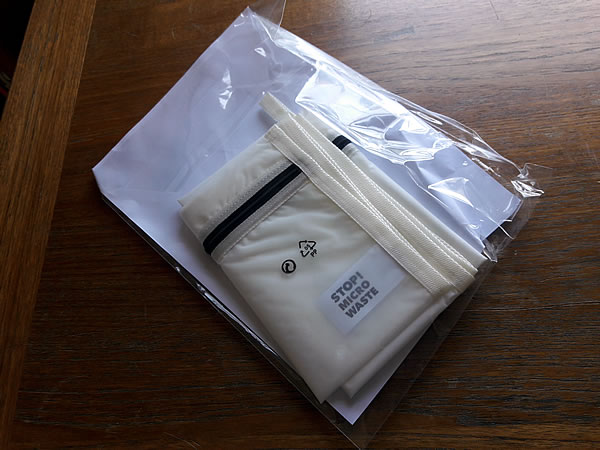

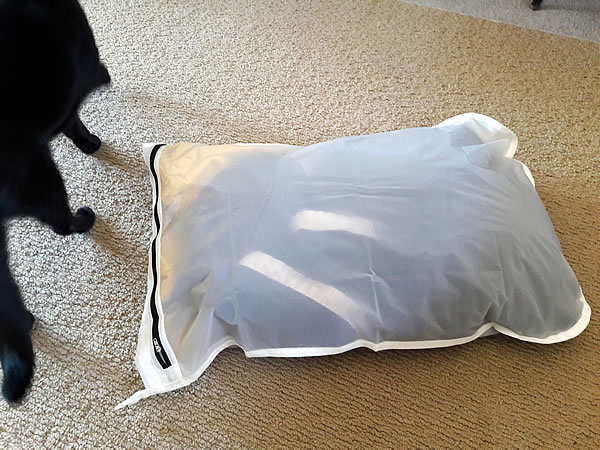

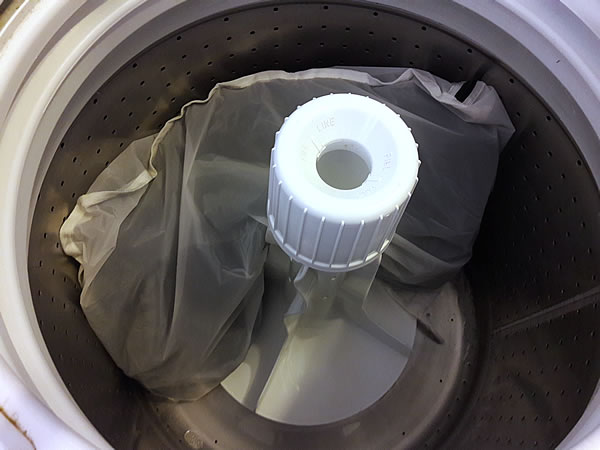
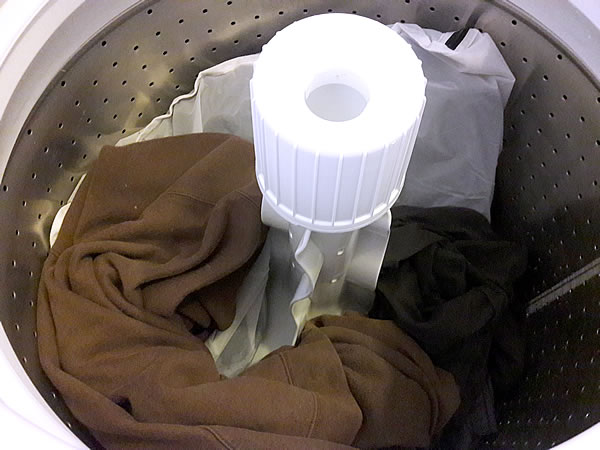

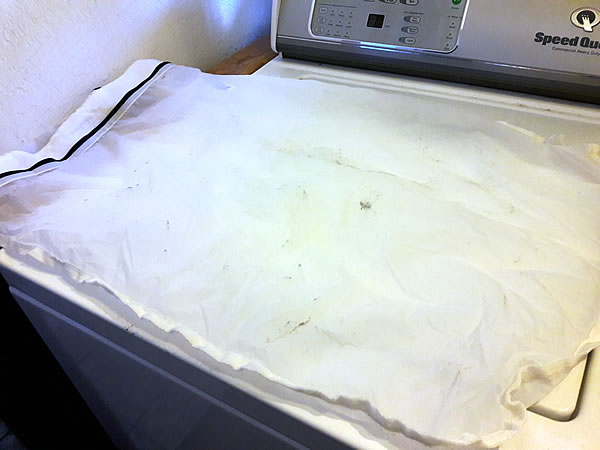
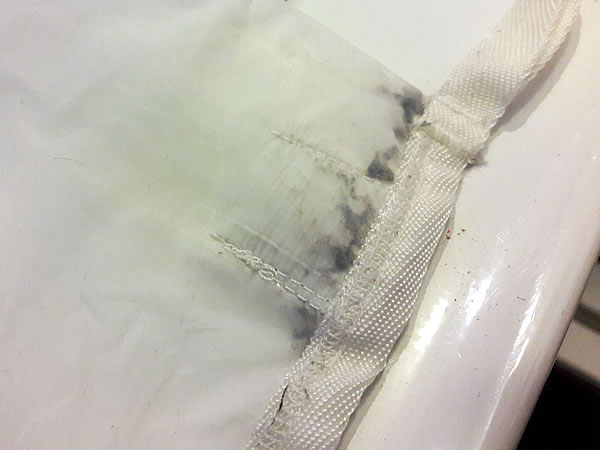
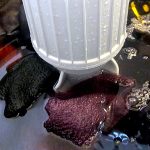
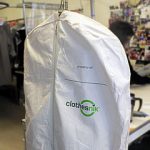
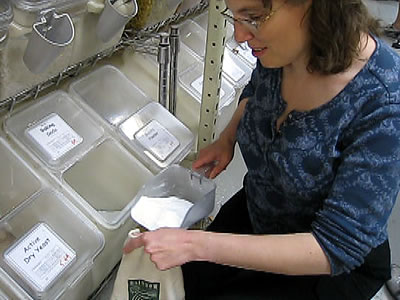
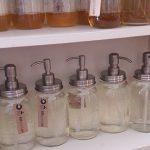

I purchased a guppyfriend and have used it about a dozen times now to wash synthetic clothing (though none of it is fleece) and have not once had any microfibers to clean out. What gives? Almost all my clothes have been purchased second hand so I’m sure they’ve been washed a lot before I got them. Plus I know the bag gives them a more gentle wash. Are these the reasons for the lack of fibers collected? It’s not that I really want to see microfibers (lol!), but that I want to know that the bag is doing what it’s supposed to.
Thanks for review. I just purchased one. I do have a question. If you specifically don’t have many items or use for the guppy, where are your intimates, socks, athletic and outdoor gear from/made of? I’m having heck of a time finding alternatives that aren’t $$$ and have been phasing out polyester and other synthetic fibers for a year or so now. Thanks!
Used mine 3x so far (with dark coloured fleeces, one of those brand new & never washed before), and the bag still looks like new: I can’t spot a single speck of dust anywhere, not even with a magnifying glass, not even in the corners. Either this guppy bag doesn’t filter out the microplastics, or microplastics get trapped in the garments and those microfibers will then end up in the environment as dust while drying & wearing, and eventually make it into the water. Wish I could give you a different experience, but I’m not convinced at all. Guess we all better stick with natural materials like wool and cotton.
What about frontloaders? Are they as susceptible to emitting microfiber pollution? And if so, will this product help there too?
On the on the material another article says:-
“They settled on polyamide, also known as nylon, that doesn’t shed fibers easily.”
Note easily. So it’s not going to be absolute zero shedding, but they did consider that in the material choice and so you have to assume it’s going to be very low losses from the bag itself.
Nor will it capture 100% of the clothe fibers, but capturing most is better than zero. I didn’t see better options as yet.
So you catch the microfibers in the bag, then put them in the trash? That means the fibres then end up in land fill?
Maybe in the landfill is better than in sewage? That’s not simple to work out, unless your waste water is completely untreated and goes straight into the sea
I think on balance it’s likely to be right… We’re looking for the best options here, but the calculations are complex and the knowledge is thin.
I was wondering the same thing, Nuf!
Other sites who manufacture and sell microfiber cloths say to never put them in the trash because they do notever decompose!! I don’t feel comfortable throwing them in the trash, but what’s another way to dispose or reuse those tiny fibers?!in wondering if we can collect them at home and send to a green recycling company that does not use water to manufacture recyclables ?
I know this is a year old, but I have begun to look into catching microfibres ans saw about the Guppy Bag. The first thing I thought of when they say to put the caught fibres in the rubbish(I am in UK) where do the fibres go to? If on landfill don’t they get into the environment anyway, or get washed away down the drains? I have written to the makers about it. There is another product that isn’t as successful, a ball that goes into the washer, and the makers there say to dispose of them thoughtfully or something similar. They acknowledge this is a problem at the moment and are looking into how to address it. Sorting this microfibre issue is not a easy as it sounds.
Thank you for such a beneficial article/product review! I went and bought three bags as a result and I’m guessing they took your feedback into account as my package arrived without any plastic, even the envelope was a sturdy brown one!
Having read the small print I have a bit of a conundrum. I bought the bags especially to wash my microfiber based reusable diapers (I had bought them before I realised how bad a fabric microfiber was and I presumed the fabric would be cotton). Anyway the guppyfriend bag instructs users to remove coarse dirt…but if I’m washing soiled nappies wich may have traces of dirt would that mean my bag fills up with unsanitary waste?
If anyone has had experience with the bag is love your input!
I’ve been looking into this bag and I can’t really find much information on what it’s actually made of. It’s synthetic polyamide, so doesn’t that mean that it can also leech synthetic fibers into water? I wondered if you had more information on it. I’ve been trying to buy clothing made of natural fibers, but it is such a challenge. Even organic cotton items can have elastane or other stretchy fibers woven in as well. Any tips?
Did you notice if it caught pet hair? That would be amazing since the pet hair clogs up our washer.
Why wouldn’t a natural fabric like muslin work? Has anybody tried it? You would need to install a zipper on a muslin bag to prevent fibers from escaping through a drawstring space, though. Ironic that the zero waste guru Bea what’s her name uses microfiber cleaning cloths. Oh the hypocrisy.
I believe Bea stopped using microfiber cloths after learning more about them. No one is perfect, and I would caution you against calling someone a hypocrite before reaching out to them to find out the full story.
useful article ! guppy friend sounds good project as it will control microfiber pollution.
Thank you so much for another very interesting and helpful review! I’m afraid to wash our synthetic clothes since I learned about microfibers so I’ll purchase one bag for sure. I’m also wondering about filters that can be added on the water drain pipe. I found 3 on plastic pollution coalition website, have you tried them?
So far, Guppy Friend is the only microfiber laundry solution I have tried. I may try others. We’ll see. :-)
How disappointing that the bag was both made from a form of plastic (perhaps there is no non plastic suitable alternative) and wrapped in plastic as well – that is just awful. I wonder if all new washing machines could be fitted with microfiber filters and the collected debris itself collected and returned to be recycled?
Popping by from #Zerowasteheroes
Not in plastic anymore -see older comments.
I checked the bag out on the Patagonia website and they sell it in a cardboard box.
FWIW I just got mine (yay!) and it came in a cardboard box!! No plastic. Can’t wait to try it out.
Thanks for posting about your experience….
So I assume it also catches any dirt, sand or food that was on the clothing? How clean did the clothes seem? My kids usually wait till they spill something to put their fleece jackets in the laundry.
Interesting. That’s a good question. I’ll ask Alexander. They did seem clean, but they weren’t full of bits of particulate to start with.
Spilled over food will be removed when detergent and water gets to the apparel. When the textiles are able to move inside the bag they should be as clean as when washed without the bag. We tested ketchup, blood, clay, chocolate, etc., but recommend to remove coarse dirt before washing, though. Certainly, solid parts will stay in the bag.
Thank you for taking the time to sample and review all of these products for us! No doubt many are eager to learn what they can do and it’s helpful to know some options exist. Definitely when I saw the pictures I could already feel myself wanting to rinse the bag under water to clean it. It would definitely take some conscious habit reshaping. I also recall that some products are more effective at catching more fibers than others. I’m with you, it will be a lot of work to properly care for synthetic clothes, so I’d rather not buy them, but will look into a system for those who do wash at my home. Your kitties are like marine life who smell something good to eat on plastic!
Thanks for evaluating this method of reducing microfiber release.
Somehow I thought that most of the microfibers were released in a tumble dryer, so I hang my microfiber clothing on a clothesline on my tiny, south facing balcony. It prevents premature thinning and required replacement of most of my clothing. Due to a “bad back”, my microfiber clothing is generally jackets and bathrobes where the weight of wool or other natural fibers causes some pain.
Should an extended period of rain limit my line drying, would most of the microfibers end up in the lint filter of a tumble dryer where they could be put in the trash?
There are fibers that are released into wash water before garments are dried, so it’s a good idea to catch them during the wash process to prevent them going down the drain.
It would be interesting to see how the fineness of the “weave†compares to, say, a high thread count cotton zip pillowcase. The allergy pillowcases, for example, have a very tight weave. I’ve used these for washing delicates in the washer for years. I’ll test it on my next fleece (I’m allergic to wool) jacket wash.